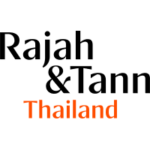-
What has been your jurisdiction’s historical level of interaction with the WTO (e.g. membership date for the GATT/WTO, contribution to initiatives, hosting of Ministerials, trade policy reviews)?
Historically, the United States has been one of the countries that has led negotiations and the administration of the international rules of world trade. U.S. involvement traces back at least to the negotiation of the International Trade Organization (“ITO”), which led to the signing of the General Agreement on Tariffs and Trade (“GATT”).
Establishment of the ITO was recommended by the delegates participating in the Bretton Woods Conference of 1944 as the third prong of the post-war international economic triad, with the International Monetary Fund and the World Bank as the two other prongs. The United States led the negotiations that resulted in signing of a charter for the proposed ITO, known as the Havana Charter. However, the Havana Charter never entered force and the ITO never came into existence, primarily because the U.S. Congress did not ratify the charter.
In parallel, the United States also actively participated in the negotiation of the GATT, which was signed in 1947 during the broader negotiation related to the ITO. Despite its decision not to ratify the Havana Charter, the United States ratified the GATT and became one of the original 23 signatory nations when it entered force on January 1, 1948.
The GATT sponsored eight rounds (and more than 45 years) of multilateral trade negotiations including the Uruguay Round, which culminated in the creation of the World Trade Organization (“WTO”). The United States participated as one of the leading negotiators in these rounds and has been a member of the WTO since its establishment on January 1, 1995.
The WTO is a member-driven organization and has various functions, including serving as a negotiation forum for trade rules, administration of trade agreements, settlement of trade disputes, and review of national trade policies. The United States has contributed to all those functions by, for example, negotiating new trade rules in the Doha Development Agenda, as well as through various initiatives (e.g., Joint Initiative on Services Domestic Regulation), discussing trade issues at committees of the WTO, participating in Ministerial Conferences (the United States hosted the third Ministerial Conference in 1999), acting as a frequent user of the WTO’s dispute settlement system, and conducting trade policy reviews.
-
Are there any WTO agreements to which your jurisdiction is not party (e.g. Government Procurement Agreement)? Is your jurisdiction seeking to accede to these agreements?
There is no agreement under the WTO legal architecture (i.e., agreements covered in Annexes 1 through 4 of the Marrakesh Agreement Establishing the World Trade Organization (“Marrakesh Agreement”)) to which the United States is not a party. The United States has signed and ratified all the multilateral agreements under the WTO, including the Trade Facilitation Agreement and the Agreement on Fisheries Subsidies. The United States is also a party to the two plurilateral agreements included in Annex 4 of the Marrakesh Agreement: The Agreement on Trade in Civil Aircraft and the Agreement on Government Procurement. The United States is also a party to the Information Technology Agreement and the 1994 Agreement on Trade in Pharmaceutical Products.
The United States does not participate in the Joint Initiative on Investment Facilitation for Development (“IFD”), which a group of developing and least-developed WTO Members launched to establish a multilateral agreement on IFD to improve conditions for foreign direct investment in developing and least-developed countries. In July 2024 during the mid-year meeting of the WTO General Council, 125 WTO Members sought for incorporation of the IFD Agreement (the text of which was finalized in November 2023) into Annex 4 of the Marrakesh Agreement, but it was blocked by three other WTO Members. At the time, the United States expressed that it had no intention of joining the IFD Agreement while it did not object to the Agreement’s incorporation into the WTO framework as an Annex 4 plurilateral agreement.
-
Is your jurisdiction participating in any ongoing WTO negotiations (e.g. E-Commerce Joint Initiative) and what has been its role?
The United States is participating in multiple WTO negotiations. For example, it has been a part of several of joint initiatives and an informal working group launched through the Eleventh WTO Ministerial Conference (“MC11”) that took place in Buenos Aires in 2017, advancing discussions of trade rules relating to e-commerce and micro, small and medium-sized enterprises (“MSMEs”). The United States also takes part in the two initiatives announced in November 2020 concerning environmental issues, one focusing on trade and environmental sustainability and another addressing issues of plastics trade.
The United States’ role varies among different negotiations. The WTO’s document database shows that the United States has submitted proposals and position papers in relation to certain trade issues, but not for others. The United States was most active in contributing to the discussion of the Joint Statement Initiative on Electronic Commerce. It is one of the original 71 WTO Members that agreed at MC11 to initiate exploratory work towards future WTO negotiations on digital trade issues. It has made proposals advocating for free cross-border data flows, limitation of data localization rules, and protection of software source codes. However, on October 25, 2023, it withdrew its support for those proposals. On July 26, 2024, a “stabilised text” on the Agreement on Electronic Commerce, which is the culmination of five years of negotiations, was circulated among the WTO Members on behalf of all the participants of the Joint Statement Initiative––except for the United States and a few other participants. According to the United States, the text “falls short and more work is needed.” In this respect, it raised “the essential security exception” as one of the topics that need to be explored further.
-
Has your jurisdiction engaged in the WTO dispute settlement system in the past 5 years? If so, in which disputes and in which capacity (as a party to a dispute or as a third party)?
The United States has engaged in the WTO dispute settlement system in the past five years as a complainant and a respondent, as well as a third party. Based on the date of a request of a consultation, in the past five years (since November 1, 2019), new consultations were requested for the disputes listed in the table below where the United States appeared as a respondent. The United States did not file a new consultation request as a complainant in the same period:
Dispute Date of Consultation Request U.S. Role United States — Origin Marking Requirement (DS597) October 30, 2020 Respondent (Complainant: Hong Kong, China) United States — Measures on Certain Semiconductor and other Products, and Related Services and Technologies (DS615) December 12, 2022 Respondent (Complainant: China) United States — Anti-dumping measure on Oil Country Tubular Goods from Argentina (DS617) May 17, 2023 Respondent (Complainant: Argentina) United States — Certain Tax Credits Under the Inflation Reduction Act (DS623) March 26, 2024 Respondent (Complainant: China) The United States also participated as a third party in 18 other disputes for which consultation requests were filed in the past five years. Those include Colombia — Anti-Dumping Duties on Frozen Fries from Belgium, Germany and the Netherlands (DS591) and European Union — Additional Measures Concerning the Importation of Citrus Fruit from South Africa (DS624).
There are other disputes in which the United States is involved as a complainant, a respondent, or a third party for which a request for consultations was filed prior to November 1, 2019 and have continued in this five-year period. Many of those disputes have been “appealed to the void”––that is, findings made by a panel were appealed by the United States and/or its opponent party to the Appellate Body while there were no Appellate Body Members to constitute a division to hear the appeal. Those disputes include Turkey — Additional Duties on Certain Products from the United States (DS561).
-
Has your jurisdiction expressed any views on reform of the WTO, in particular, the dispute settlement system and the Appellate Body?
Since 2016, the United States has blocked the process to appoint (or reappoint) Appellate Body Members, which has made it impossible for the Appellate Body to function since the end of 2019. The Office of the United States Trade Representative (“USTR”) argues that the Appellate Body has exceeded its mandate as set out by the WTO rules. In particular, USTR has raised the following objections:
- The Appellate Body frequently failed to complete appeals in the 90-day period set out in the Understanding on Rules and Procedures Governing the Settlement of Disputes (“DSU”).
- Appellate Body Members stayed on after their terms expired to complete appeals that began while they were in office.
- The Appellate Body reviewed factual findings made by panels, despite the requirement under the DSU that an appeal “shall be limited to issues of law.”
- The Appellate Body issued advisory opinions on issues not necessary to resolve a dispute.
- The Appellate Body emphasized the significance of past decisions and treated them as binding precedents.
- The Appellate Body declined to make recommendations as to bringing a measure at issue into conformity with the WTO rules in instances where it considered the measure had expired after panel establishment.
- The Appellate Body has overstepped its authority by opining on matters within the authority of other WTO bodies (g., the Ministerial Conference).
- The Appellate Body overreached its judicial mandate by reaching decisions that go beyond the text of the agreements themselves.
In addition, the United States has also voiced its criticisms towards the WTO dispute settlement system in general, stating, for example, that it has undermined WTO Members’ ability to act on the environmental issues and to protect their workers from non-market behavior. It also argues that WTO panels should not be allowed to review measures taken under the national security exception.
In the statement it made at the September 2024 meeting of the WTO Dispute Settlement Body, the United States reiterated its view that “re-launching the Appellate Body selection process will not address the concerns” that it has with the WTO dispute settlement system and that “restoration of the Appellate Body does not address Members’ interests in accessibility, in inclusivity, in efficiency, in timeliness, in accountability, in guarding against overreach, or in preserving Members’ policy space.”
-
What are the key bilateral and/or regional free trade agreements (FTAs) in force for your jurisdiction and from which dates did they enter into force?
The United States has comprehensive free trade agreements (“FTAs”) in force with 20 countries. In addition, the United States has other trade agreements with different focuses, such as free trade in critical minerals. One of the key FTAs for the United States is the United States-Mexico-Canada Agreement (“USMCA”), which entered into force on July 1, 2020, replacing the North American Free Trade Agreement (“NAFTA”), which had been in effect since January 1, 1994.
NAFTA was the most comprehensive FTA at the time it was negotiated and eliminated most tariffs and nontariff barriers on trade of goods among the three signatory countries (the United States, Mexico, and Canada), advancing North American economic integration. It also contained several groundbreaking provisions setting new trade rules and disciplines (e.g., those concerning protection of intellectual property rights, services trade, dispute settlement procedures, investment, labor, and environment), which were used as a model for trade agreements subsequently negotiated by the United States.
USMCA continues to be important for the three countries. The agreement, which is comprised of 34 chapters and 12 side letters, was updated from NAFTA by amending certain trade rules, including motor vehicle rules of origin, and adding new trade disciplines regarding digital trade, state-owned enterprises, and anticorruption. USMCA also focuses on providing increased worker rights protection and environmental protection. Notably, USMCA provides for a Facility-Specific Rapid Response Labor Mechanism (“RRM”) between the United States and Mexico, which is a dispute settlement mechanism for expedited enforcement of workers’ free association and collective bargaining rights at the facility level.
Article 34.7 of USMCA provides that USMCA shall terminate 16 years after the date of its entry into force, which would be July 1, 2036, unless each party confirms its desire for the continuation of the USMCA for a new 16-year term. Article 34.7 also requires the parties to meet and review the agreement on the sixth anniversary of the entry into force of USMCA, which would be 1 July 2026. The six-year review will be the first opportunity for a party to notify whether it wishes to renew the agreement in 2036. A notification that a party opposes the 2036 renewal would trigger further consultations until either the disagreement is resolved or the USMCA expires in 2036. The United States, Mexico, and/or Canada may seek to utilize this procedure to renegotiate certain parts of the USMCA.
-
Is your jurisdiction currently negotiating any FTAs (or signed any FTAs that have not yet entered into force) and, if any, with which jurisdictions? What are your jurisdiction’s priorities in those negotiations (e.g. consolidating critical mineral supply chains, increasing trade in financial services, etc.)? For both FTAs under negotiation and signed FTAs, when are they expected to enter into force?
The United States is currently negotiating multiple trade agreements, but they are not FTAs in the traditional sense because they are not expected to involve tariff liberalization or other market access commitments. Those agreements include the Indo-Pacific Economic Framework for Prosperity (“IPEF”) and the Americas Partnership for Economic Prosperity (“APEP”).
The United States is negotiating IPEF with 13 partners, which are Australia, Brunei, Fiji, India, Indonesia, Japan, Malaysia, New Zealand, the Philippines, Singapore, South Korea, Thailand, and Vietnam. The IPEF negotiation for the three out of four “pillars” (i.e., supply chains, clean economy, and fair economy pillars) have been completed with the entry into force of the Supply Chain Agreement in February 2024, and of the Clean Economy Agreement, the Fair Economy Agreement, and the Agreement on IPEF (i.e., overarching agreement for the operation of IPEF) in October 2024, for the member countries that have completed the necessary ratification and notification procedures. The IPEF’s other pillar, covering traditional trade topics, remains incomplete.
APEP is negotiated among the United States, Barbados, Canada, Chile, Colombia, Costa Rica, the Dominican Republic, Ecuador, Mexico, Panama, Peru, and Uruguay.
The United States has also been conducting multiple bilateral initiatives following the same non-traditional approach. They include the US-Taiwan Initiative on 21st Century Trade, the US-Kenya Strategic Trade and Investment Partnership, and the negotiations with the EU on the Global Arrangement on Sustainable Steel and Aluminum. The United States and Taiwan concluded a first phase agreement in June 2023 on trade facilitation, good regulatory practices, services domestic regulation, anticorruption, and small and medium-sized enterprises, while continuing the negotiation for the other areas of the initiative’s negotiating mandate (e.g., digital trade and standards). There is no clear outlook as to when these negotiations will conclude.
The United States’ regional and bilateral negotiations have been guided by the Biden Administration’s worker-centric trade policy, which is based on the view that “[t]rade must protect and empower workers, drive wage growth, and lead to better economic outcomes for all Americans.” In this context, the Administration has emphasized addressing forced labor, supply chains of essential products like critical minerals, and climate change.
-
Which five countries are the biggest trading partners for your jurisdiction in relation to each of exports and imports and which goods or services are particularly important to your jurisdiction’s external trade relationships?
According to data compiled by the U.S. Department of Commerce Bureau of Economic Analysis, the five countries that were the biggest trading partners of the United States for combined imports and exports of goods and services in 2023 were Mexico, Canada, China, Germany, and Japan. The countries to which the United States exported the largest amount of goods and services in 2023 were Canada, Mexico, China, Netherlands, and Germany. The countries from which the United States imported the largest amount of goods and services in 2023 were Mexico, China, Canada, Germany, and Japan.
The most important goods exported by the United States in 2023 were industrial supplies and materials; capital goods (other than automotive); consumer goods (other than food and automotive); automotive vehicles, parts, and engines; and foods and beverages. The most important service exports from the United States in 2023 were business services (other than financial services and insurance services); travel (for all purposes); financial services; charges for the use of intellectual property; and transport services.
-
What are the three most important domestic and three most important international developments that are likely to have the biggest impact on your jurisdiction’s trade profile and priorities?
The three domestic developments that are likely to have the biggest impact on the trade profile and priorities of the United States are (a) the growing bipartisan consensus that China is a significant threat to the national security and commercial interests of the United States; (b) the outcome of the 2024 elections; and (c) implementation of policies to strengthen domestic supply chains and limit investment in and access to key technologies by countries of concern.
The three international developments that are likely to have the biggest impact on the trade profile and priorities of the United States are (a) actions by China to compete to lead the world trading order, (b) the wars in Israel/Lebanon and Ukraine, and (c) efforts by the United States to expand its collaboration with the European Union, the United Kingdom, Australia, Japan, and Korea on trade controls to include other countries in understandings that limit trade and investment in advanced technologies in China, Russia, Iran, North Korea, and other regimes that are aligned with China, Russia, Iran, or North Korea.
The bipartisan consensus on China, the domestic policies to strengthen supply chains and restrict access to key technologies (including by limiting investment in such technologies in countries of concern) and the negotiation of understandings to limit trade with countries of concern will continue regardless of the outcome of the 2024 elections in the United States, though the intensity and magnitude of those actions may change depending on who the winner is. The wars in Israel/Lebanon and Ukraine are continuing and their impact on trade could be greatly magnified if either of those conflicts morphs further into a wider regional or global conflict. China’s actions are based on internal dynamics and a decision to increase support for Russia and Iran could significantly impact trade and rapidly accelerate the de-coupling of major economies. Regardless of any external actions by China, internal market dynamics in China may cause China to increase its exports, particularly of advanced goods like automobiles, with resulting impacts on other manufacturing economies. This may spur unilateral or coordinated actions by the U.S., EU and others to limit access by China to their economies.
-
Has your jurisdiction taken any specific domestic measures to address sustainability issues in international supply chains, for example in relation to forced labour, human rights and environmental issues? Is it seeking to address these issues in any FTAs or other international agreements?
The United States regulates forced labor in supply chains through the Uyghur Forced Labor Prevention Act, December 23, 2021 (“UFLPA” Pub. L. 117-78, 135 Stat. 1525) and Withhold Release Orders pursuant to Section 307 of the Tariff Act of 1930; 19 U.S.C. § 1307).
UFLPA requires U.S. Customs and Border Protection (“CBP”) to detain and exclude or seize China-related goods presumed to have been made wholly or in any part by forced labor. Specifically, 19 U.S.C. § 1307, as amended by the UFLPA, requires CBP to presume that any goods “mined, produced or manufactured wholly or in part” in the Xinjiang Uyghur Autonomous Region (“XUAR”) of China or “produced” by an entity on the UFLPA Entity List are made with forced labor and are thus not admissible into the United States. To overcome the presumption, Importers must either demonstrate: (a) that their goods are outside the UFLPA’s scope, and therefore are not subject to the rebuttable presumption; or (b) that they are entitled to an “exception” to the UFLPA exclusion by rebutting the presumption. To rebut the presumption, the importer must present, within 30 days of any detention, “clear and convincing” evidence that the imported goods were not mined, produced, or manufactured wholly or in part by forced labor; have “completely and substantively responded” to all related requests for information from CBP; and have “fully complied with” CBP’s Operational Guidance for Importers (June 13, 2022) (“CBP Operational Guidance”) and the interagency Forced Labor Enforcement Task Force’s Strategy to Prevent the Importation of Goods Mined, Produced, or Manufactured with Forced Labor in the People’s Republic of China (June 17, 2022) (“FLETF Strategy”).
Similarly, through Withhold Release Orders (“WRO”), Section 307 of the Tariff Act of 1930 prohibits the importation of merchandise mined, manufactured or produced, wholly or in part, by forced labor, including convict labor, forced child labor and indentured labor (19 U.S.C. § 1307). Together with implementing regulations (19 C.F.R. §§ 12.42 through 12.45), the statute authorizes CBP to issue a WRO whenever information reasonably, but not conclusively, indicates that such goods are entering the United States. CBP initially detains, rather than seizes, shipments subject to a WRO. Within three months after receiving a notice of detention, importers need either to prove admissibility, export or destroy the goods, which CBP excludes from admission into U.S. commerce. Proof of admissibility, in this instance, means proof that the producer or its suppliers used no forced labor to manufacture the goods, from raw materials to final assembly.
USMCA also regulates labor issues among the agreement’s parties. Specifically, it incorporates the labor rights standards from the International Labor Organization into national law for each of the parties and requires that those laws be domestically enforced. It also contains provisions on prohibiting the importation of goods produced by forced labor, addressing violence against workers exercising their labor rights, addressing sex-based discrimination in the workplace, and ensuring that migrant workers are protected under labor laws. Further, pursuant to the agreement, Mexico was required to recognize collective bargaining rights in Mexico. The agreement’s RRM that permits cross-border enforcement actions against individual facilities that appear to be denying workers the right of freedom of association and collective bargaining.
Also affecting international supply chains, certain public companies registered on US stock exchanges that manufacture, or contract to have manufactured, products that contain tin, tantalum, tungsten or gold necessary to the functionality or production of their products must disclose annually whether any of those minerals originated in the Democratic Republic of the Congo or an adjoining country. Although this is not enforced as a trade or border mechanism, it involves and can affect the international supply chain.
Further, certain US individual states have additional supply chain laws prohibiting forced labor, requiring sustainable packaging laws, etc. These can be enforced for products sold in their states, which can affect the international supply chain.
-
Is your jurisdiction taking any specific domestic measures to promote near-shoring/on-shoring for strategic goods (i.e. domestic subsidies, import tariffs, or export restrictions)? Is it seeking to address these issues in any FTAs or other international agreements?
The United States has adopted domestic subsidies, import tariffs, export restrictions, and, most recently, outbound investment restrictions on China, to promote near-shoring and on-shoring of strategic goods. The United States has modified some import restrictions, export restrictions, and domestic subsidies based on FTAs and bilateral agreements or bilateral understandings with other jurisdictions.
The United States is continuing to implement numerous statutory provisions to encourage production of strategic goods in the United States, including semiconductors, electric vehicle batteries, and critical minerals, among other items. The USMCA encourages near-shoring of supply chains through increased U.S. content requirements for products benefitting under the agreement. These subsidy and domestic content requirements generally conform with U.S. obligations under FTAs. The subsidy programs have caused friction with allied countries that do not have FTAs with the United States, and in some cases the United States (e.g., Japan) has negotiated bilateral agreements to allow goods produced by the trading partner to qualify. In other cases, discussions with allied nations are ongoing.
The United States has adopted tariffs on steel and aluminum products specifically to protect the national security of the United States. These tariffs have been paused or removed based on agreements between the United States and specific countries but remain in place for most of the world. In addition, the U.S. has increased tariffs on a range of imports from China. Depending on the outcome of the U.S. elections, it is possible tariffs will increase significantly.
The United States has one of the most comprehensive export control regimes in the world and has adopted both multilateral export controls and unilateral export controls for national security and foreign policy reasons. In concert with the European Union and many other nations the United States has continued to expand the extensive controls on the export of goods to Russia and Belarus in response to Russia’s unjustified invasion of Ukraine. The United States also maintains extensive export controls on Iran, North Korea, and Cuba. In addition, the United States has increasingly restricted exports of advanced semiconductors and advanced semiconductor equipment to China to prevent their use in developing artificial intelligence, quantum computing, and other advanced technologies that could be used to support China’s military. The U.S. continues to expand and adjust these advanced computing restrictions, with license requirements applied to countries that may permit China to access advanced computing resources. Most recently, the U.S. imposed controls on U.S. person outbound investment in advanced technology sectors in China. The U.S. is likely to continue to expand its controls on advanced computing items used for AI, quantum computing and other advanced technologies regardless of the outcome of the U.S. elections. A particular focus of expanded controls may be on advanced AI models and related service offerings.
-
What is the legal regime governing trade sanctions in your country? Has it evolved in response to ongoing geopolitical developments, such as the on-going crisis in Ukraine?
The President of the United States has broad authority under various statutes to impose sanctions. The principal statute underlying most sanctions programs, the International Emergency Economic Powers Act (“IEEPA”), extends broad executive authority over declared national emergencies arising from unusual and extraordinary threats to the U.S. national security, foreign policy, or economy coming predominantly from outside the United States. IEEPA authorizes the President to, among other things, investigate, block, void, prevent, or prohibit certain transactions involving foreign countries or governments, foreign nationals or entities, or property in which any of the foregoing have any interest, where such transactions come within U.S. jurisdiction. Transactions subject to U.S. jurisdiction can include transactions (a) by persons (individuals or entities) subject to U.S. jurisdiction, or (b) involving property or property interests subject to U.S. jurisdiction. The terms “property” and “property interest” are very broadly defined in the implementing regulations and include, among other things, real, personal, or mixed property, whether tangible or intangible, and any present, future, or contingent interest or interests therein. Once the President has imposed sanctions, the U.S. Department of the Treasury’s Office of Foreign Assets Control (“OFAC”) is generally tasked with the implementation, administration, and civil enforcement of those sanctions. For instance, an Executive Order issued by the President might establish a sanctions program and specify initial targets but may leave it to OFAC to designate additional targets at a later date. Although OFAC primarily administers U.S. sanctions regulations, the U.S. Department of State also imposes various sanctions, largely related to non-proliferation.
On April 24, 2024, the President signed into law the 21st Century Peace through Strength Act, Pub. L. No. 118-50, div. D (the “Act”). In relevant part, Section 3111 of the Act extends from five years to 10 years the statute of limitations for civil and criminal violations of IEEPA. This new 10-year statute of limitations applies to any violation that was not time-barred at the time of its enactment. Consequently, OFAC may now commence an enforcement action for civil violations of IEEPA-based sanctions prohibitions within 10 years of the latest date of the violation if such date was after April 24, 2019.
The U.S. Department of Commerce’s Bureau of Industry and Security BIS (“BIS”) administers and enforces export controls on most commercial and dual-use items (commodities, software, and technology) under the Export Administration Regulations (“EAR”), issued pursuant to the Export Control Reform Act (“ECRA”). Export controls generally apply to exports, reexports and in-country transfers of items “subject to the EAR.” In some cases, the EAR also regulates activities of U.S. persons.
While the underlying statutory authorities for the imposition of sanctions have not changed, the conflict in Ukraine has resulted in a dramatic expansion in the application of such authorities to impose sanctions on Russia. The Russia-related sanctions include comprehensive territorial measures prohibiting the exportation or importation of goods, services or technology to/from, and new investment in, certain occupied regions of Ukraine; a broad ban on new investment in Russia; targeted prohibitions against certain imports and exports of goods, services, and technology from/to Russia; prohibitions on the provision of certain services in connection with the maritime transport of Russian oil and petroleum products sold above specified price caps; prohibitions on virtually all transactions with or involving many Russia-related sanctioned persons; and export control restrictions imposing export license requirements for nearly all dual-use items intended for Russia, many items intended for use in Russian oil and gas projects and in industry, items potentially useful for Russia’s chemical and biological weapons production capabilities, and many luxury items intended for Russia or Russia-related sanctioned persons. Additionally, in response to the Russia-Ukraine jurisdiction, BIS has further expanded the extraterritorial application of its rules by asserting export control jurisdiction over transactions involving items that are the foreign-produced direct product of certain U.S. software or technology and that are destined for Russia, the occupied territories of Ukraine, or to certain restricted Russian persons. The United States has also expanded its use of so-called secondary sanctions measures against non-U.S. persons through the issuance of an Executive Order that authorizes OFAC to impose sanctions on foreign (i.e., non-U.S.) financial institutions determined to have engaged in certain transactions that could support Russia’s military-industrial base.
In addition, the U.S. has implemented expansive export controls on China in response to what the U.S. has described as a significant mobilization of resources by China to support its defense modernization, including the implementation of its military-civil fusion development strategy, in ways that are contrary to U.S. national security and foreign policy interests. Specifically, the United States has imposed significant restrictions on exports, reexports, and transfers related to semiconductor manufacturing, advanced computing items, and items intended for supercomputing end uses to or within China, as well as on U.S. person activities in support of semiconductor manufacturing in China. While these new restrictions generally operate within the established framework of the EAR, they are notable for their breadth and reach, including reaching activity involving items not “subject to the EAR” and the expansion of extra-territorial jurisdiction for transactions involving items that are the foreign-produced direct product of certain U.S. software or technology.
-
Does your jurisdiction use trade remedies and, if so, what remedies are most commonly used? And in which jurisdictions and on which products are they most commonly applied?
The United States is an active user of trade remedies against imports that are perceived to be unfairly traded or harmful to domestic industries, including antidumping duties, countervailing duties, and safeguard measures. Currently, the United States enforces over 700 antidumping duty and countervailing duty orders, with the largest number (238) imposed on imports from China and the second largest number (74) imposed on imports from India. Overall, U.S. antidumping and countervailing duty orders in force apply to imports from Asia, Europe, Africa, South America, Canada, and Mexico. U.S. antidumping and countervailing duty orders cover a wide range of imported goods, including steel and aluminum products, chemicals, agricultural products, and a variety of manufactured goods.
-
What is the key legislation relating to anti-dumping duties, countervailing duties and safeguards? What are the authorities responsible for investigating and deciding whether these remedies are applied?
U.S. antidumping and countervailing duty measures are authorized by Sections 701 – 783 of the Tariff Act of 1930 (as amended) (19 U.S.C. §§ 1671 – 1677n), while U.S. safeguard measures are authorized by Section 201 of the Trade Act of 1974 (19 U.S.C. § 2251). The U.S. Department of Commerce (“DOC”) and International Trade Commission (“ITC”) each play a role in U.S. antidumping and countervailing duty investigations. DOC investigates and determines whether imports are being dumped or subsidized, while ITC investigates and determines whether such “subject imports” materially injure or threaten to materially injure the domestic industry producing the like product. ITC is also the lead agency responsible for investigating and proposing safeguard measures.
DOC and ITC also have issued extensive regulations to implement the statutes cited above. DOC’s regulations for antidumping and countervailing duty (i.e., antisubsidy) proceedings are set forth at 19 C.F.R. §§ 351.101 – 351.529, while ITC’s regulations for antidumping and countervailing duty proceedings are set forth at 19 C.F.R. §§ 207.1 – 207.69. On March 25, 2024, DOC published a final rule implementing significant revisions to its conduct of antidumping and countervailing duty proceedings, including new rules (1) to clarify DOC’s authority to find “particular market situations” in antidumping proceedings; (2) to permit DOC to treat a foreign government’s underenforcement of labor, environmental, and intellectual property standards as sources of price and cost distortion in antidumping and antisubsidy proceedings; and (3) to allow DOC to investigate allegations of transnational subsidies (i.e., subsidies provided by a government in one country that benefit producers or exporters in another country) in antisubsidy proceedings. ITC’s regulations governing safeguard proceedings are set forth at 19 C.F.R. §§ 206.1 – 206.37.
-
What is the process for a domestic business and/or industry to seek trade remedies (i.e. key documentation, evidence required, etc.)? How can foreign producers participate in trade remedies investigations in your jurisdiction?
In the United States, domestic industries may file petitions with DOC and ITC to seek the imposition of antidumping duties and/or countervailing duties on specified imports. If the petitions satisfy the requirements of 19 U.S.C. § 1671a(b) (countervailing duties) and 19 U.S.C. § 1673a(b) (antidumping duties), DOC must initiate an investigation. Among these requirements, the petitioners must account for at least 25% of the total U.S. production of the like product (as well as more than 50% of the U.S. production by the portion of the industry expressing support for or opposition to the petitions). In addition, the petitions must adequately allege (based on information reasonably available to the petitioners) that the subject imports are being dumped or benefit from countervailable subsidies and materially injure the domestic industry (or threaten material injury). Similarly, domestic industries may file petitions to request the imposition of safeguard measures. U.S. law recognizes that foreign producers are “interested parties” in trade remedy investigations, entitling them to participate and advocate for their interests. In antidumping and countervailing duty investigations, DOC selects certain foreign producers as “mandatory respondents” for individual investigation of dumping or receipt of countervailable subsidies.
-
Does your jurisdiction have any special regulations or procedures regarding investigation of possible circumvention or evasion of trade remedies? What are the consequences of circumventing or evading trade remedies?
In the United States, DOC is authorized to investigate and counter “circumvention” of antidumping and countervailing duty orders under Section 781 of the Tariff Act (19 U.S.C. § 1677j), while CBP is authorized to investigate and counter “evasion” of antidumping and countervailing duty orders. “Circumvention” and “evasion” are similar but distinct concepts under U.S. law. “Circumvention” occurs when DOC determines that circumstances warrant the expansion of an antidumping or countervailing duty order to include imports of goods that fall outside the literal scope of the order. In contrast, “evasion” occurs when an importer has avoided the payment of duties by falsely declaring imports that are already subject to the antidumping or countervailing duty orders to be outside the scope of an order. If DOC finds that imported goods are circumventing an order, it will expand the scope of the order to include such goods. If CBP finds that an importer has evaded an order, it will require the importer to pay applicable antidumping or countervailing duties (or cash deposits) that were avoided.
-
What are the substantive legal tests in your jurisdiction for the application of remedies? Does your jurisdiction apply a lesser duty rule and/or a public interest test in anti-dumping investigations? Are there any other notable features of your jurisdiction's trade remedies regime?
In the United States, a wide variety of substantive legal tests applicable to antidumping and countervailing duty investigations are prescribed by U.S. statute, regulations published by DOC and ITC, and agency practice. The United States does not apply the lesser duty rule or a public interest test in antidumping investigations. The retrospective assessment of antidumping and countervailing duties is likely the most notable feature of the U.S. trade remedy regime. Under this system, the importer tenders cash deposits in the amount of estimated antidumping and countervailing duties at the time of importation and is unaware of its final antidumping duty or countervailing duty liability until determined by DOC in an “administrative review” conducted well after the time of importation. The United States’ retrospective system of assessing antidumping and countervailing duties creates uncertainty for importers and a disincentive to import.
-
Is there a domestic right of appeal against the authority's decisions? What is the applicable procedure?
Yes, “interested parties” may appeal final determinations by DOC and ITC in trade remedy proceedings to the U.S. Court of International Trade (“CIT”). “Interested party” generally refers to a U.S. producer, U.S. importer, foreign producer, or foreign government that participated in the agency proceeding leading to the contested determination. CIT decisions, in turn, may be appealed to the U.S. Court of Appeals for the Federal Circuit. Generally, CIT appeals of final trade remedy determinations must be commenced within 30 days of publication of the determination.
-
Has your jurisdiction's imposition of any trade remedies been challenged at the WTO? If so, what was the outcome? A general explanation of trends can be provided for jurisdictions involved in significant trade remedies dispute settlement.
Many U.S. trade remedy decisions have been challenged in WTO dispute settlement, with mixed degrees of success for the complaining WTO members. One recent study found that, in WTO cases brought against the United States, at least one violation was found in a large majority of the cases. Because not every violation is of equal value, “success” in WTO dispute settlement is difficult to measure. With respect to trade remedies, WTO cases addressing DOC’s “zeroing” practice stand out as the most impactful. Under “zeroing,” DOC does not give the respondent credit for non-dumped sales when calculating the company’s overall dumping margin. Instead, DOC sets comparisons of home-market sales to U.S. sales that generate negative margins (i.e., when the home-market prices are lower than the U.S. prices) to zero. Multiple WTO members successfully challenged DOC’s application of zeroing, eventually compelling DOC to abandon zeroing as a standard practice in antidumping duty investigations (although DOC continues to apply zeroing under certain circumstances).
-
What authorities are responsible for enforcing customs laws and regulations and what is their role?
CBP enforces customs laws and regulations. It also enforces U.S. laws related to trade to ensure safety. Importers must declare entries and related information to CBP and CBP conducts the related compliance monitoring and enforcement. CBP receives instructions from and otherwise coordinates with other U.S. agencies, such as DOC to enforce trade remedies and the U.S. Food and Drug Administration (“FDA”) to monitor the trade of FDA-regulated products.
-
Can importers apply for binding rulings from the customs authority in advance of an import transaction? How can customs decisions be challenged?
Importers can apply for binding rulings from CBP. CBP issues binding, prospective rulings for goods prior to importation and issues other rulings, such as internal advice requests and protest review decisions, for goods that have already entered the United States and for which a customs agent has taken some action on the entry that is adverse to the importer. A ruling is a written decision and is published publicly after issuance. Rulings are issued pursuant to 19 CFR Part 177. Sample rulings topics include the appropriate tariff classification, valuation, the country of origin, valuation, etc. There are also specific advance ruling provisions in USMCA. Additionally, CBP decisions relating to merchandise already imported can be challenged within 180 days of liquidation by the importer, their broker, or attorney through a “protest” under Section 514 of the Tariff Act of 1930 and pursuant to 19 CFR part 174. Further, an importer or other person can request that a CBP field office seek advice from the Headquarters Office through a written request setting forth a description of the transaction, the specific questions presented, the applicable law, and an argument for the conclusions advocated and other information, pursuant to 19 CFR part 177. Finally, if certain circumstances are met, importers may appeal customs decisions to the CIT and CAFC.
-
Where can information be found about import tariffs and other customs charges?
Information about import tariffs and other charges can be found in the Harmonized Tariff Schedule of the United State (available at https://hts.usitc.gov/) and the U.S. Federal Register (available at https://www.federalregister.gov/). DOC also maintains a list of all active antidumping duty orders and countervailing duty orders (searchable by country) available at https://legacy.trade.gov/enforcement/operations/scope/index.asp. (The DOC website is user-friendly but is not the authoritative source for active orders as it is not always up to date. The Federal Register should be referenced for the most up to date information.)
-
Does your jurisdiction have any of the following features: a. Authorised Economic Operator (AEO) or equivalent programme? b.Mutual recognition arrangements (MRAs) with other jurisdictions in relation to their AEO programmes? c. Suspension of duties on any goods imports (for example, for goods for which there is no domestic production)? d. Allowing goods imports valued below a certain amount to enter duty free (de minimis shipments)?
Yes:
- The U.S. equivalent of the Authorised Economic Operator program is the Customs Trade Partnership Against Terrorism (“CTPAT”). The program has a particular focus on security issues, but also includes other supply chain regulations such as anti-forced labor provisions and provides participants with several benefits such as reduced frequency of border examinations.
- The United States has certain mutual recognition agreements (sometimes referred to as “arrangements” instead of “agreements”) for AEO programs that recognize the compatibility of their respective supply chain security programs, such as with Brazil.
- Certain, but not all, duties, such as Section 232 and Section 301 duties, are eligible for “exceptions” that are either specific to a good or to a good and importer when the good is not sufficiently produced in the United
- Pursuant to 19 USC 1321, the United States permits de minimis shipments at or less than $800 to be imported free of duty. In the last year there have been several congressional bills and legal initiatives to amend the de minimis rules. In particular, the US President announced in September of 2024 that it intended to issue a Notice of Proposed Rulemaking that would exclude from the de minimis exemption all shipments containing products covered by tariffs imposed under Sections 201 or 301 of the Trade Act of 1974, or Section 232 of the Trade Expansion Act of 1962. It also announced that the Consumer Product Safety Commission (CPSC) staff intended to propose a final rule requiring importers of consumer products to file Certificates of Compliance (CoC) electronically with CBP and CPSC at the time of entry, including for de minimis
-
What free trade zones and facilities such as bonded warehouses are available in your jurisdiction?
Foreign-Trade Zones (“FTZ”) are secure areas under CBP supervision that are generally considered outside the customs territory of the United States. They are the United States’ version of what are known internationally as free-trade zones. Authority for establishing an FTZ is granted by the Foreign-Trade Zones Board under the Foreign-Trade Zones Act of 1934, as amended (19 U.S.C. 81a-81u). The Foreign-Trade Zones Act is administered through the FTZ Regulations (15 CFR Part 400) and the CBP Regulations (19 CFR Part 146).
Foreign and domestic merchandise may be moved into zones for operations, not otherwise prohibited by law, including storage, exhibition, assembly, manufacturing, and processing. All zone activity is subject to public interest review. Foreign-trade zone sites are subject to the laws and regulations of the United States, as well as those of the states and communities in which they are located.
In the United States, bonded warehouses are buildings or other secured areas in which imported dutiable merchandise may be stored, manipulated, or undergo manufacturing operations without paying duties that would otherwise be owed for up to five years from the date of importation. Authority for establishing bonded warehouses in the United States is set forth in 19 USC 1555 and in 19 CFR part 19.
-
What are the domestic scrutiny and transparency arrangements before and during negotiations for a trade agreement? What domestic ratification procedures are required once a trade agreement is concluded?
The U.S. Constitution grants Congress the authority to impose duties and “regulate Commerce with foreign Nations,” while it provides that the president “shall have Power, by and with the Advice and Consent of the Senate, to make Treaties, provided two-thirds of the Senators present concur.” As such, the Constitution requires Senate advice and consent by a two-thirds majority vote to ratify a treaty. However, the Constitution is silent about executive agreements (i.e., agreements that the president does not submit for congressional approval) in this respect. In either case, in general, if the trade agreement includes provisions that are not “self-executing” Congress must enact implementing legislation to make the provisions judicially enforceable in the United States.
Recognizing the separation of powers and the reality that the executive branch needs credibility to negotiate trade agreements with foreign nations, Congress has periodically enacted, through legislation commonly known as trade promotion authority (“TPA”), expedited procedures to consider trade agreements negotiated by the executive branch within limits established by Congress. U.S. presidents have traditionally negotiated trade agreements pursuant to TPA.
The last TPA authorization expired in 2021. Overlapping with the timing of this expiration (and the previous expiration in 2015), the United States has increasingly engaged in negotiations of trade agreements without receiving explicit congressional authority or approval, including for the ongoing negotiations of IPEF and the US-Taiwan Initiative for on 21st Century Trade. While these new agreements will not involve tariff reductions or other types of market access commitments, and the United States’ obligations under these agreements may not require amendments to U.S. laws, the executive branch’s constitutional authority underlying this approach is subject to debate.
-
What are the domestic procedures for local traders to request the government take action against measures of other jurisdictions that are inconsistent with WTO and/or FTA rules?
In the United States, there are no specific domestic procedures, prescribed under the U.S. laws or regulations, for local traders to request the government act against measures of other jurisdictions that are inconsistent with WTO and/or FTA rules. Engaging in consultations with USTR, which is responsible for dispute settlement proceedings, is a common way to initiate the discussions of dispute settlement procedures. In addition to having discussions with USTR specifically with a view to initiate a dispute settlement procedure, submitting a comment when USTR invites public comments as part of its annual National Trade Estimate Report on Foreign Trade Barriers publication is one way to raise trade issues to USTR. Various U.S. industry associations submit reports to USTR detailing trade barriers in other countries each year.
United States: International Trade
This country-specific Q&A provides an overview of International Trade laws and regulations applicable in United States.
-
What has been your jurisdiction’s historical level of interaction with the WTO (e.g. membership date for the GATT/WTO, contribution to initiatives, hosting of Ministerials, trade policy reviews)?
-
Are there any WTO agreements to which your jurisdiction is not party (e.g. Government Procurement Agreement)? Is your jurisdiction seeking to accede to these agreements?
-
Is your jurisdiction participating in any ongoing WTO negotiations (e.g. E-Commerce Joint Initiative) and what has been its role?
-
Has your jurisdiction engaged in the WTO dispute settlement system in the past 5 years? If so, in which disputes and in which capacity (as a party to a dispute or as a third party)?
-
Has your jurisdiction expressed any views on reform of the WTO, in particular, the dispute settlement system and the Appellate Body?
-
What are the key bilateral and/or regional free trade agreements (FTAs) in force for your jurisdiction and from which dates did they enter into force?
-
Is your jurisdiction currently negotiating any FTAs (or signed any FTAs that have not yet entered into force) and, if any, with which jurisdictions? What are your jurisdiction’s priorities in those negotiations (e.g. consolidating critical mineral supply chains, increasing trade in financial services, etc.)? For both FTAs under negotiation and signed FTAs, when are they expected to enter into force?
-
Which five countries are the biggest trading partners for your jurisdiction in relation to each of exports and imports and which goods or services are particularly important to your jurisdiction’s external trade relationships?
-
What are the three most important domestic and three most important international developments that are likely to have the biggest impact on your jurisdiction’s trade profile and priorities?
-
Has your jurisdiction taken any specific domestic measures to address sustainability issues in international supply chains, for example in relation to forced labour, human rights and environmental issues? Is it seeking to address these issues in any FTAs or other international agreements?
-
Is your jurisdiction taking any specific domestic measures to promote near-shoring/on-shoring for strategic goods (i.e. domestic subsidies, import tariffs, or export restrictions)? Is it seeking to address these issues in any FTAs or other international agreements?
-
What is the legal regime governing trade sanctions in your country? Has it evolved in response to ongoing geopolitical developments, such as the on-going crisis in Ukraine?
-
Does your jurisdiction use trade remedies and, if so, what remedies are most commonly used? And in which jurisdictions and on which products are they most commonly applied?
-
What is the key legislation relating to anti-dumping duties, countervailing duties and safeguards? What are the authorities responsible for investigating and deciding whether these remedies are applied?
-
What is the process for a domestic business and/or industry to seek trade remedies (i.e. key documentation, evidence required, etc.)? How can foreign producers participate in trade remedies investigations in your jurisdiction?
-
Does your jurisdiction have any special regulations or procedures regarding investigation of possible circumvention or evasion of trade remedies? What are the consequences of circumventing or evading trade remedies?
-
What are the substantive legal tests in your jurisdiction for the application of remedies? Does your jurisdiction apply a lesser duty rule and/or a public interest test in anti-dumping investigations? Are there any other notable features of your jurisdiction's trade remedies regime?
-
Is there a domestic right of appeal against the authority's decisions? What is the applicable procedure?
-
Has your jurisdiction's imposition of any trade remedies been challenged at the WTO? If so, what was the outcome? A general explanation of trends can be provided for jurisdictions involved in significant trade remedies dispute settlement.
-
What authorities are responsible for enforcing customs laws and regulations and what is their role?
-
Can importers apply for binding rulings from the customs authority in advance of an import transaction? How can customs decisions be challenged?
-
Where can information be found about import tariffs and other customs charges?
-
Does your jurisdiction have any of the following features: a. Authorised Economic Operator (AEO) or equivalent programme? b.Mutual recognition arrangements (MRAs) with other jurisdictions in relation to their AEO programmes? c. Suspension of duties on any goods imports (for example, for goods for which there is no domestic production)? d. Allowing goods imports valued below a certain amount to enter duty free (de minimis shipments)?
-
What free trade zones and facilities such as bonded warehouses are available in your jurisdiction?
-
What are the domestic scrutiny and transparency arrangements before and during negotiations for a trade agreement? What domestic ratification procedures are required once a trade agreement is concluded?
-
What are the domestic procedures for local traders to request the government take action against measures of other jurisdictions that are inconsistent with WTO and/or FTA rules?












